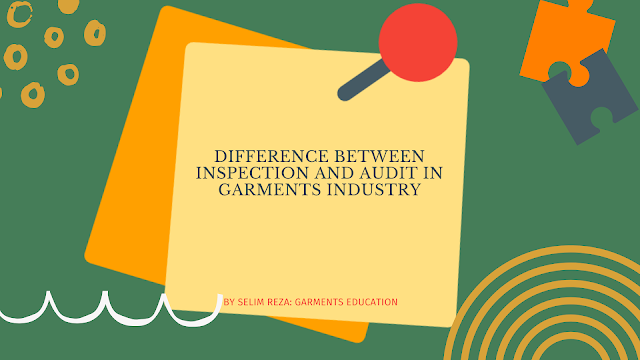Difference between Inspection and Audit
In the Garments Industry, both Inspection and audit are critical processes used to assess and ensure quality, compliance, and operational efficiency. While they share similarities in terms of evaluating processes and outcomes,
Difference between Inspection and Audit in Garments Industry. There are distinct differences between inspection and audit:
Inspection:
Purpose:
- Quality Control: Inspection primarily focuses on assessing the quality of finished garments or components at various stages of production.
- Defect Detection: It aims to identify defects, discrepancies, and deviations from quality standards to ensure that products meet specified requirements.
- Immediate Feedback: Provides immediate feedback on product quality and conformity to standards, enabling corrective actions to be taken during production.
Scope:
- Specific to Products: Inspection targets specific products or batches of garments to check for defects, workmanship issues, measurements, and overall quality.
- Hands-On: Involves hands-on examination of garments or components to detect visible and functional defects.
Types:
- Includes various types such as Initial Production Inspection (IPI), During Production Inspection (DPI), Final Random Inspection (FRI), and Pre-Shipment Inspection (PSI), each conducted at different stages of production.
Outcome:
- Defect Report: Results in a detailed defect report with findings, categorization of defects (major, minor, critical), and recommendations for corrective actions.
Audit:
Purpose:
- Compliance and Systems Evaluation: Audit focuses on assessing systems, processes, procedures, and compliance with standards, regulations, and contractual requirements.
- Systematic Review: Evaluates the effectiveness, efficiency, and reliability of systems and practices in place within the organization.
Scope:
- Broad and Systematic: Audit covers broader aspects such as quality management systems, environmental impact, social compliance, health and safety standards, and ethical practices.
- Documentation Review: Includes review of documentation, records, policies, and procedures to ensure adherence to prescribed standards and requirements.
Types:
- Includes different types such as Quality Management System (QMS) audits, Social Compliance audits (e.g., SA8000), Environmental audits (ISO 14001), and Ethical audits (e.g., BSCI).
Outcome:
- Audit Report: Results in an audit report that assesses the organization's overall compliance and performance against established criteria. It may include findings, non-conformities, opportunities for improvement, and recommendations.
Key Difference between Inspection and Audit in Garments Industry:
Focus: Inspection focuses on product quality and conformity to specifications, while audit focuses on evaluating organizational systems, processes, and compliance with broader standards and regulations.
Timing: Inspection is conducted at specific stages of production or shipment readiness, whereas audits are typically conducted periodically or on a scheduled basis.
Scope of Examination: Inspection involves physical examination of products, whereas audits involve systemic reviews and may include document reviews, interviews, and observations of practices.
Integration and Importance:
Both inspection and audit are complementary processes that contribute to ensuring overall quality, compliance, and customer satisfaction in the garments industry.
Integration of both processes helps garment manufacturers maintain high standards of product quality while also demonstrating compliance with legal, ethical, and customer-specific requirements.
Difference between Inspection and Audit in Garments Industry. Understanding these differences helps garment manufacturers effectively implement both inspection and audit processes to achieve and maintain quality standards, regulatory compliance, and operational excellence in their production and business practices.




.png)
.png)



